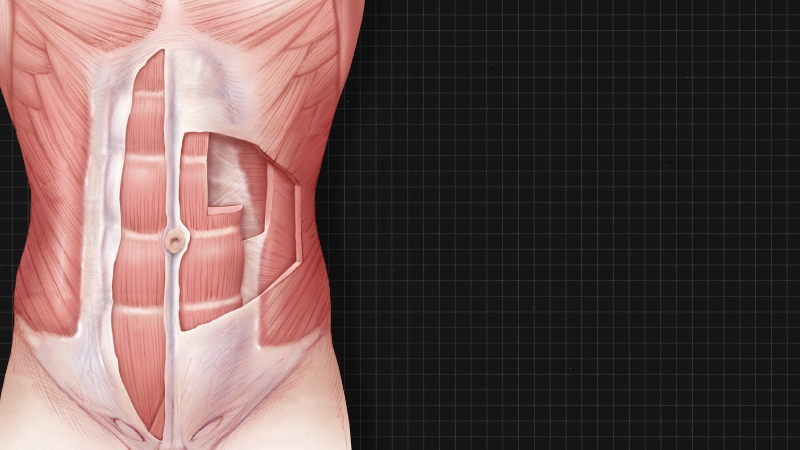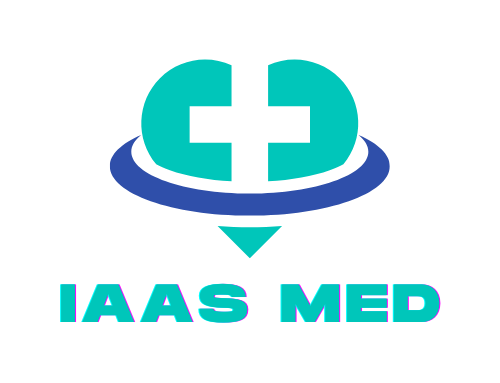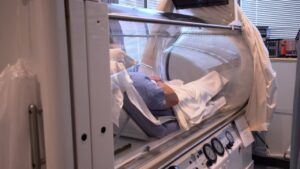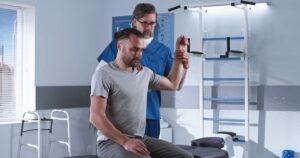Lower rib pain during physical activity is often a clear sign that something is mechanically or structurally off in the way your body moves, supports your core, or transfers load between your upper and lower torso.
It is not just a “side stitch” or a random sharp jab; it usually involves deeper issues such as intercostal muscle strain, joint dysfunction, nerve compression, or, in some cases, misalignment or instability in the ribcage itself.
People most frequently report this type of discomfort during twisting movements, high-impact sports, deep breathing under exertion, or prolonged core engagement (like in planks, running, or rowing).
In many cases, the pain is localized to the 8th to 12th ribs, the so-called “floating” or “false” ribs, which are more flexible and less securely attached than upper ribs. These ribs rely heavily on muscular and connective tissue support.
When those supports are stressed, injured, or imbalanced, pain signals begin to fire during specific physical tasks.
Cause
Key Trigger
Type of Pain
Treatment Focus
Intercostal Muscle Strain
Twisting/lifting
Sharp, stabbing
Rest, light mobility, rehab
Costovertebral Joint Dysfunction
Rotation/posture
Achy, deep
Manual therapy, spine mobility
Oblique/Abdominal Overload
Sit-ups/planks
Pulling, burning
Core balance, reduce volume
Slipping Rib Syndrome
Instability, trunk motion
Sharp, clicking/popping
Bracing, PT, and possible surgery
Diaphragm Dysfunction
Poor breathing mechanics
Cramp-like, radiating
Breathwork, core sequencing drills
Intercostal Muscle Strain
| Cause | Overstretching or tearing of the muscles between the ribs |
| Common Triggers | Over-rotation, sudden twisting, lifting heavy weights |
| Pain Description | Sharp, stabbing, or pulling pain worsened by deep breathing or torso movement |
| Physical Signs | Local tenderness, swelling, or muscle tightness in the area |
Intercostal muscles are responsible for supporting the ribcage and facilitating respiration. During activities involving rotation or lateral flexion (like tennis, golf, or even yoga), these muscles can become strained or micro-torn.
Unlike typical muscle soreness, intercostal strain often causes pain that intensifies with breathing or coughing, which makes it easy to mistake for a lung or digestive issue.
If untreated or if you continue high-intensity movement, the strain can worsen. The best course is rest, controlled stretching, and careful reintroduction to physical activity.
Costovertebral Joint Irritation or Dysfunction
Cause
Inflammation or mechanical stress in the rib-to-spine joints
Common Triggers
Poor posture, repetitive twisting, and spinal stiffness
Pain Description
Achy or deep pain in the back of the rib, sometimes radiating
Physical Signs
Pain with spinal rotation or arching the back
Each rib connects to the thoracic spine through a costovertebral joint. These joints are small but essential to stability and movement. When these joints become compressed, irritated, or poorly aligned, it can create pain that mimics muscle strain.
This pain may feel dull and tight, but sharp when rotating the spine or lifting arms overhead.
Often, this issue is linked to sedentary posture (e.g., working at a desk) combined with a sudden return to physical activity without mobility prep. Manual therapy, thoracic mobility exercises, and postural correction can improve symptoms significantly.
Oblique or Rectus Abdominis Muscle Overload

Cause
Core muscles are pulling excessively on the rib attachment sites
Common Triggers
Sit-ups, planks, and sudden twisting during sports
Pain Description
Pulling or burning sensation at the lower rib edge
Physical Signs
Muscle tightness, weakness, or pain during flexion/twisting
The external obliques and rectus abdominis attach directly to the lower ribs. When these muscles are overloaded, either from overtraining or insufficient warm-up, they can create tension at their bony attachments.
This often results in insertional pain at the lower rib cage during intense core activity.
This is particularly common among athletes who overuse their rectus abdominis (six-pack muscle) without balancing it with deep core work. Reducing volume, adjusting technique, and including more transverse abdominis activation (e.g., dead bugs, bird dogs) can reduce rib-side strain.
Slipping Rib Syndrome
Cause
Hyper-mobility or subluxation of lower costal cartilage
Common Triggers
Sudden trunk movement, contact sports, prior trauma
Pain Description
Sharp, sudden, or popping pain with movement or pressure
Physical Signs
Clicking sensation, tenderness at the rib tip, relief when pressed inward
One of the most underdiagnosed and overlooked causes of lower rib pain during activity is Slipping Rib Syndrome. This occurs when the cartilage of the lower ribs (usually 8–10) becomes hypermobile or partially dislocates, resulting in irritation of surrounding nerves and tissues.
The condition is more common in young, active individuals and athletes, especially those involved in martial arts, rowing, or gymnastics. While not immediately dangerous, slipping ribs can significantly impair performance and quality of life.
In many patients, the slipping rib probability increases with repetitive lateral flexion and trunk extension, as these movements exploit the anatomical looseness of floating ribs. Diagnosis often involves physical palpation (hooking maneuver) and is confirmed via dynamic ultrasound.
Treatment ranges from conservative methods, like abdominal bracing and physical therapy, to surgical stabilization in more persistent cases.
Diaphragmatic or Breathing Pattern Dysfunction

Cause
Improper breathing mechanics or diaphragm overuse
Common Triggers
Shallow breathing under stress, holding breath during effort
Pain Description
Achy or cramping pain around rib margins
Physical Signs
Shortness of breath during exercise, excessive chest lifting
The diaphragm anchors to the lower ribs and is a key player in core stability. When breathing becomes dysfunctional, such as during stress or while holding your breath through effort, it can strain the diaphragm’s rib attachments and even mimic lower rib pain.
This issue is common among novice lifters and endurance athletes who haven’t developed good respiratory-cordination under load. Diaphragmatic breathing, breath training, and core-integrated movement drills (like loaded carries or tempo squats) are often effective in correcting the pattern and reducing discomfort.
Final Thoughts
@theprehabguys Try these exercises for rib pain relief! #ribpain #ribpaintreatment #ribpains ♬ original sound – [P]rehab®️
Lower rib pain during exercise should never be brushed off as a random side effect. It is often your body’s way of alerting you to imbalance, instability, or muscular overuse, especially in the lower thoracic and upper abdominal regions.
Some people also report stomach pain alongside lower rib pain, especially when core tension is poorly distributed.
While occasional soreness is expected in training, recurrent pain that worsens with movement or breathing demands assessment. The key is not just to treat the symptom, but to identify the mechanical or structural cause, whether it’s a strained muscle, dysfunctional joint, or something more complex like slipping rib syndrome.
Related Posts:
- Five Probable Causes Of Large Clots During Menstruation
- Choosing Between a Lower Endoscopy vs Colonoscopy
- First Time Under the Knife: What to Expect Before,…
- 10 Smart Ways to Cut Hospital Costs During Planned Surgery
- What is Incarcerated Hernias? - Causes, Symptoms,…
- 5 Causes And Symptoms Of Breast Itch In Women















